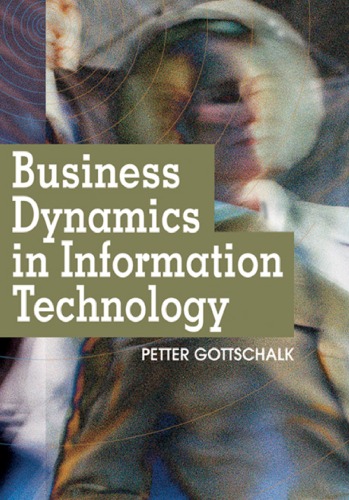

Most ebook files are in PDF format, so you can easily read them using various software such as Foxit Reader or directly on the Google Chrome browser.
Some ebook files are released by publishers in other formats such as .awz, .mobi, .epub, .fb2, etc. You may need to install specific software to read these formats on mobile/PC, such as Calibre.
Please read the tutorial at this link: https://ebookbell.com/faq
We offer FREE conversion to the popular formats you request; however, this may take some time. Therefore, right after payment, please email us, and we will try to provide the service as quickly as possible.
For some exceptional file formats or broken links (if any), please refrain from opening any disputes. Instead, email us first, and we will try to assist within a maximum of 6 hours.
EbookBell Team

5.0
18 reviews
ISBN 13: 9781599044293
Author: Professor of Knowledge Management Petter Gottschalk
Emerging business models, value configurations, and information technologies interact over time to create competitive advantage. Modern information technology has to be studied, understood, and applied along the time dimension of months and years, where changes are the rule. Such changes created by interactions between business elements and resources are very well suited for system dynamics modeling. Business Dynamics in Information Technology presents business-technology alignment processes, business-technology interaction processes, and business-technology decision processes, serving the purpose of helping the reader study information technology from a dynamic, rather than a static, perspective. By introducing two simple tools from system dynamic modeling - causal loops and reference modes - the dynamic perspective will become important to both students and practitioners in the future.
Chapter I: Resource-Based Theory of the Firm
Organizational Resources
Capabilities and Resources
Strategic Resources
Slack Resources
Firm Boundaries
Activity-Based Theory of the Firm
Information Technology Resources
Characteristics of Value Configurations
Comparison of Value Configurations
Chapter II: Organizational Business Dynamics
Dynamic Business Performance
Causal Loop Diagramming
System Dynamics Modeling
Organizational Performance
Chapter III: Information Technology Governance
Dynamics of IT Principles
Dynamics of IT Infrastructures
Dynamics of IT Architectures
Dynamics of IT Applications
Dynamics of IT Investments
IT Governance Capability
Chapter IV: Dynamics of E-Business Infrastructure
Electronic Business Models
Determining Appropriate Models
Infrastructure Capabilities
Infrastructure Dynamics
Strategic Agility
Chapter V: Dynamics of Knowledge Management Systems
Characteristics of Knowledge
Knowledge Value Level
Identification of Knowledge Needs
Knowledge Categories
Knowledge Management Systems
Knowledge Technology Stages
Stages of Growth Models
The KMT Stage Model
Technology Stage Dynamics
Chapter VI: Dynamics of Outsourcing Relationships
Agency Theory
Partnership and Alliance Theory
Relational Exchange Theory
Partnership Quality Determinants
Partnership Quality Dynamics
Chapter VII: Corporate Strategic Management
Strategic Planning
The Y Model for Strategy Work
Resource-Based Strategy
Activity-Based Strategy
Strategic Alignment
Strategic Management Dynamics
Chapter VIII: Dynamics of CIO Performance
The Chief Information Officer
The Chief Executive Officer
The CEO-CIO Relationship
Business Dynamics for Executive Performance
Changing Role of CIO to CEO
Chapter IX: Knowledge Business Examples
Dynamics of Law Firm Performance
Dynamics of Police Investigation Performance
Dynamics of E-Business Knowledge
Dynamics of Outsourcing Knowledge
Chapter X: Conclusion
Tags: Professor of Knowledge Management Petter Gottschalk, Dynamics, Business